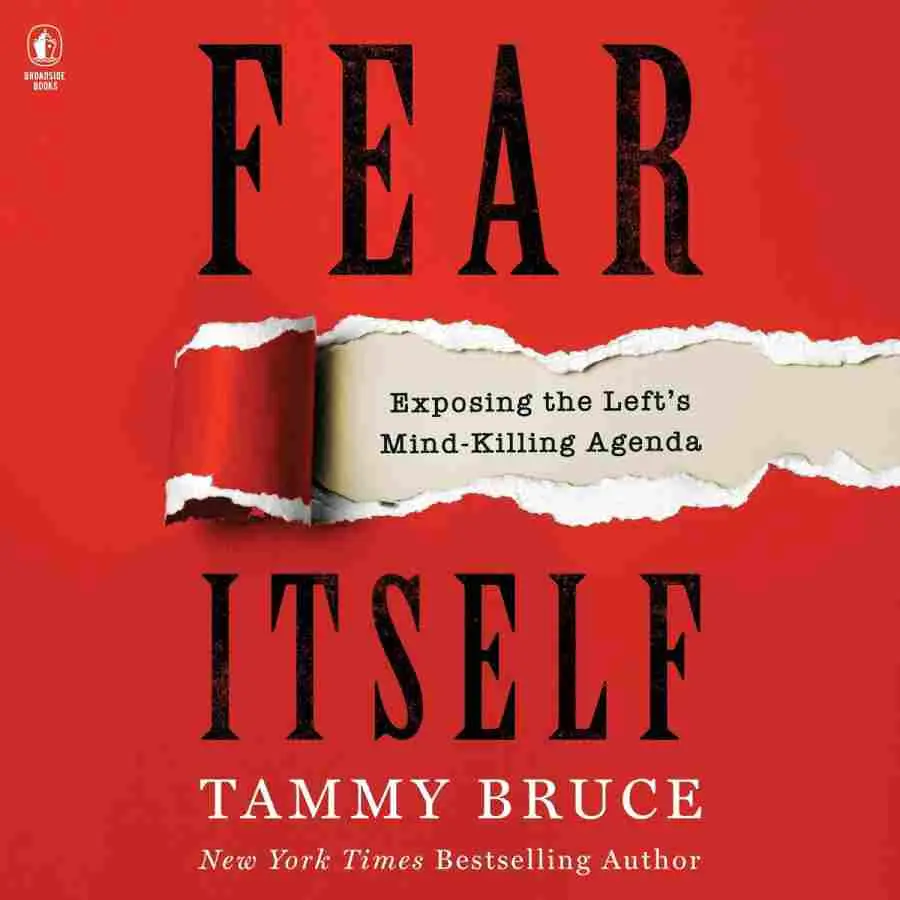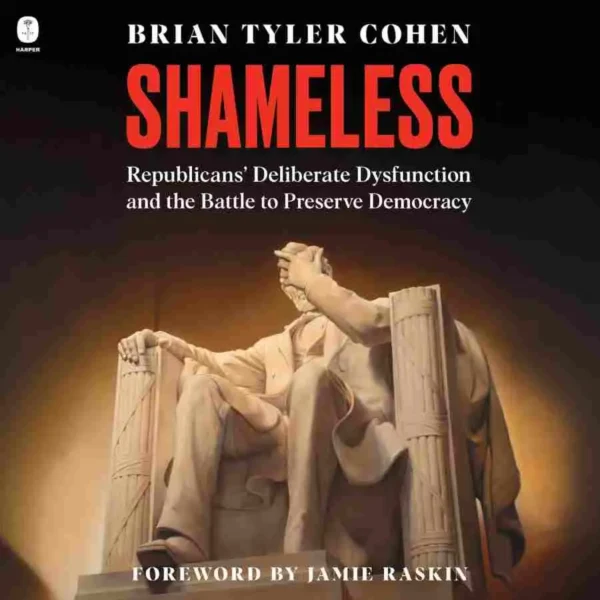

As an ardent reader with a fondness for novels that stir the pot of political conversation, I often find myself drawn to works that promise not just to enlighten, but also to question the dominant narrative. Tammy Bruce’s most recent book, Fear Itself: Exposing the Left’s Mind-Killing Agenda, piqued my interest exactly because it presented itself as a no-holds-barred criticism of what Bruce sees as the left’s systematic use of fear to dominate and manipulate society.
This is not my first exposure to Bruce’s work. Her earlier works, The New Thought Police and The Death of Right and Wrong, also handled the sensitive subjects of free speech and moral relativism with a keen and frequently controversial edge. Bruce’s transition from liberal activist to conservative pundit has provided her with a unique viewpoint that she incorporates into her analysis, distinguishing her voice in the crowded arena of political commentary.
Setting the Scene: The Weaponization of Fear
In Fear Itself, Bruce claims that the left has polished fear into a powerful weapon, employed not just to stifle opposition but also to transform the fundamental fabric of American society. According to Bruce, fear is purposefully used to keep the public in a condition of perpetual worry, making them more susceptible to increasing government control and less inclined to resist the loss of their liberties.
The book’s idea is contemporary and challenging. In an era of increased political division and a seemingly continuous sequence of crises—from pandemics to climate change to social unrest—Bruce’s thesis taps into a rising concern about how fear is being used in public discourse. She contends that these crises are not just natural occurrences, but are often exaggerated or managed to further a larger ideological purpose.
Bruce’s Argument: Fear as a Political Tool
Bruce’s thesis is based on the premise that fear is more than simply a feeling; it is a well developed weapon of political manipulation. She contends that the left’s dominance of major cultural and institutional levers—such as the media, academia, and government—has produced a climate in which fear is pervasive and relentless. According to Bruce, this climate undermines people’s confidence, isolates them from their communities, and eventually makes them more susceptible to the demands of those in power.
Bruce sees terror as one of the major techniques for instilling a feeling of dependent on the government. According to Bruce, by sustaining a narrative of continual catastrophe, the left makes the argument for more government interference in all aspects of society, including health care, education, and the economy. This, she claims, leads to a progressive loss of individual autonomy and an increase in state control.
Drawing Parallels: Common Themes in Conservative Literature
As I read Fear Itself, I couldn’t help but see connections with other writings in the conservative canon that address similar issues. For example, in The Authoritarian Moment, Ben Shapiro describes how fear and intimidation are employed to impose conformity and stifle dissent. While Shapiro’s critique is wider, embracing the roles of companies, media, and social media, Bruce’s is more specifically focused on the left’s use of fear as a main instrument of control.
Another book that comes to mind is Jonah Goldberg’s Suicide of the West, which examines how the breakdown of traditional Western principles has resulted in a reduction in individual liberty and the growth of “tribalism.” Goldberg, like Bruce, believes that this deterioration is being driven, in part, by a purposeful attempt to weaken trust in the institutions and ideals that have traditionally supported American society.
Whereas Goldberg takes a more historical and philosophical perspective, Bruce’s argument is strongly grounded in current events and her own personal transition from liberalism to conservatism. This immediacy and intensity in her writing is likely to appeal with readers who are worried about the country’s trajectory.
Breaking Down the Book Chapter by Chapter
Bruce’s book is structured in such a manner that she can gradually establish her thesis, with each chapter focused on a different component of the left’s fear-mongering methods. The book begins with an examination of the psychological impacts of fear and how it might be utilized to influence behavior. Bruce establishes the context for her larger thesis by demonstrating how fear has been utilized as a weapon of political control throughout history, using both historical and present instances.
From there, Bruce digs into particular topics that she says demonstrate the left’s use of fear. One of the most significant instances she provides is the treatment of the COVID-19 epidemic. Bruce contends that the epidemic was utilized by the left not just as a public health issue, but also as a chance to extend government authority and limit individual liberties. She cites lockdowns, mask regulations, and vaccination requirements as examples of how fear was exploited to justify enormous government intrusion in people’s lives.
Another chapter discusses the emergence of cancel culture, which Bruce views as another embodiment of the left’s fear-based ideology. She says that cancel culture is about more than simply suppressing voices that disagree with the dominant narrative; it is also about fostering an environment of fear in which individuals are scared to speak out or oppose the existing dogma. This, she believes, reinforces the left’s dominance by marginalizing and ostracizing individuals who reject its objectives.
Identity politics is another major issue in the novel. Bruce thinks that the left’s attention on race, gender, and sexuality is about more than simply pushing for social justice; it is also about sowing discord and generating a feeling of crisis. According to Bruce, by presenting these concerns as systematic oppression and existential danger, the left can keep people in a condition of fear and worry, making them more inclined to adopt radical remedies that they would otherwise reject.
Narrative Characters: Ideological Figures
Although Fear Itself is not a book, it does have a cast of characters in the form of ideological people and groups Bruce feels are important to the left’s fear-mongering strategy. Among them are politicians, activists, and media figures, who, according to Bruce, have contributed to the perpetuation of a fear culture.
Bruce focuses on the role of the mainstream media, accusing it of sensationalizing dangers and exaggerating anxieties in order to further a left-wing agenda. She claims that the media has played an important role in the left’s strategy, serving as both a platform for its views and an enforcement of its dogma. By dominating the narrative, the media can mold public perception and generate the feeling of crisis that the left needs to promote its goal.
Bruce picks out the campaigners behind cancel culture, portraying them as modern-day inquisitors. She claims that these activists utilize the threat of social and professional ostracism to quiet opposition and impose compliance. By threatening individuals with the loss of their jobs, reputations, and social status, cancel culture fosters a climate in which people are hesitant to speak out or dispute the dominant narrative.
Key Revelations and Spoilers
One of the most interesting features of Fear Itself is Bruce’s investigation into how fear has been institutionalized in American culture. She contends that this is the outcome of the left’s planned and concerted attempt to transform the American mind, rather than an unintended consequence. According to Bruce, the ultimate objective is to create a society in which fear drives behavior, making individuals more prepared to tolerate government overreach and less prone to challenge authority.
Bruce also makes a particularly interesting case for the role of education in this goal. She claims that schools and colleges have become breeding grounds for fear, conditioning young minds to see the world through the lenses of victimization and danger. This, she contends, not only suppresses independent thinking but also trains the next generation to accept a more authoritarian type of governance.
Another major takeaway from the book is Bruce’s argument that the left’s exploitation of fear is part of a bigger plan to radically reshape American culture, not merely for short-term political benefits. She contends that by putting people in a condition of dread and worry, the left is able to destroy traditional values and institutions that have traditionally functioned as a barrier to dictatorship. This, she says, may lead to a future in which individual liberties are increasingly compromised and government control becomes even more ubiquitous.
The broader implications: a warning and a call to action
Fear Itself is essentially a criticism of the left’s use of fear, but it also serves as a warning about the strategy’s larger ramifications. Bruce claims that if left uncontrolled, the culture of fear she depicts would have disastrous effects for American civilization. She cautions that the loss of individual liberties, the growth of cancel culture, and the government’s growing authority are all indicators of a society headed toward a more authoritarian future.
At the same time, Bruce’s book serves as a call to action. She encourages readers to understand the strategies being used to influence them and to fight the inclination to succumb to fear. She contends that doing so allows us to restore the ideals of individual liberty and personal responsibility that have historically characterized American society.
Reception and Controversy: A Divided but Crucial Read
Given the subject matter, it’s hardly surprising that Fear Itself has aroused debate. Bruce’s supporters have applauded her for her bravery in speaking out against what she perceives as a rising danger to American liberties, while others have accused her of scaremongering and oversimplification.
Conclusion: A timely and thought-provoking read
Tammy Bruce’s book Fear Itself: Exposing the Left’s Mind-Killing Agenda is a striking indictment of the contemporary left’s use of fear as a political tool. Whether or not you agree with her findings, the book encourages readers to think critically about the forces that shape our society, as well as how fear may be used to manipulate and dominate.
For anyone interested in current events, political strategy, or the psychology of fear, Bruce’s book provides a compelling—and controversial—point of view that will undoubtedly spark debate. It’s a book that begs to be read with an open mind, and whether you find yourself nodding in agreement or chafing at her points, it’ll keep you thinking long after you’ve finished reading.


